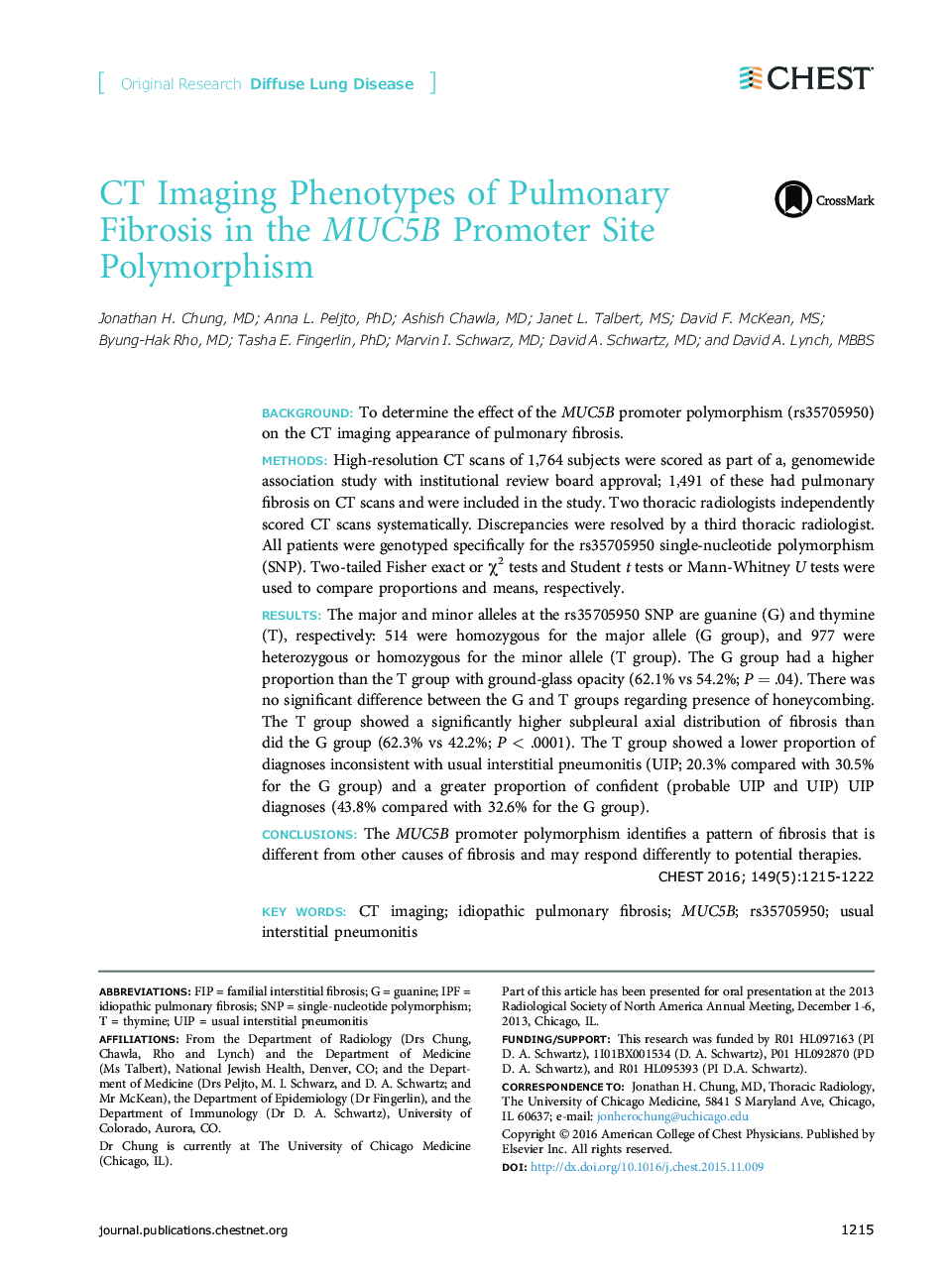| Article ID | Journal | Published Year | Pages | File Type |
|---|---|---|---|---|
| 2899710 | Chest | 2016 | 8 Pages |
BackgroundTo determine the effect of the MUC5B promoter polymorphism (rs35705950) on the CT imaging appearance of pulmonary fibrosis.MethodsHigh-resolution CT scans of 1,764 subjects were scored as part of a, genomewide association study with institutional review board approval; 1,491 of these had pulmonary fibrosis on CT scans and were included in the study. Two thoracic radiologists independently scored CT scans systematically. Discrepancies were resolved by a third thoracic radiologist. All patients were genotyped specifically for the rs35705950 single-nucleotide polymorphism (SNP). Two-tailed Fisher exact or χ2 tests and Student t tests or Mann-Whitney U tests were used to compare proportions and means, respectively.ResultsThe major and minor alleles at the rs35705950 SNP are guanine (G) and thymine (T), respectively: 514 were homozygous for the major allele (G group), and 977 were heterozygous or homozygous for the minor allele (T group). The G group had a higher proportion than the T group with ground-glass opacity (62.1% vs 54.2%; P = .04). There was no significant difference between the G and T groups regarding presence of honeycombing. The T group showed a significantly higher subpleural axial distribution of fibrosis than did the G group (62.3% vs 42.2%; P < .0001). The T group showed a lower proportion of diagnoses inconsistent with usual interstitial pneumonitis (UIP; 20.3% compared with 30.5% for the G group) and a greater proportion of confident (probable UIP and UIP) UIP diagnoses (43.8% compared with 32.6% for the G group).ConclusionsThe MUC5B promoter polymorphism identifies a pattern of fibrosis that is different from other causes of fibrosis and may respond differently to potential therapies.
